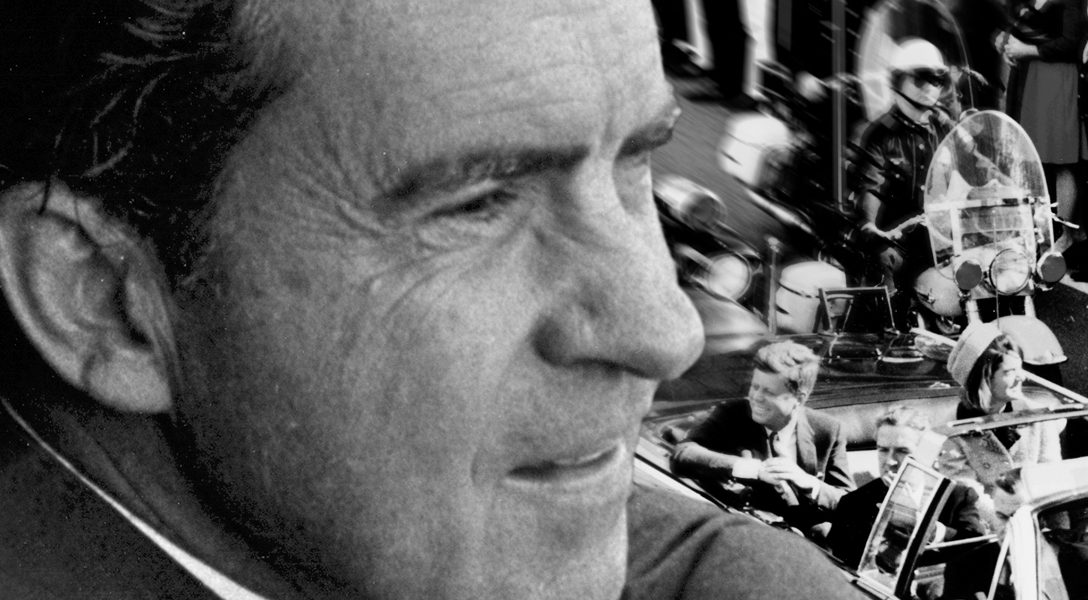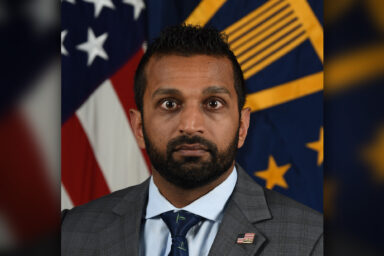In Part 2, we look at the remarkable fact that Richard Nixon was present in Dallas on November 22, 1963 when his 1960 vanquisher, John F. Kennedy, was violently removed from office. Is it preposterous to wonder if Nixon’s presence there was engineered? Was it to teach him a lesson?
We are running this series because people are looking back at Watergate as a guide from another time, when another president was on the ropes. And we are running it because, as is often the case, the media did not truly investigate what went on, or why. They, along with so-called historians, continue to perpetuate basic falsehoods about what transpired during that epic scandal, what Nixon actually did and said — and they ignored intriguing evidence suggesting the real reason he was removed.
We recommend you start with Part 1. Here, in Part 2, we look at the remarkable fact that Richard Nixon was present in Dallas on November 22, 1963 when his 1960 vanquisher, John F. Kennedy, was violently removed from office. Is it preposterous to wonder if Nixon’s presence there was engineered? Was it to teach him a lesson?
Excerpted from Russ Baker’s Family of Secrets: The Bush Dynasty, America’s Invisible Government and the Hidden History of the Last Fifty Years.
Notes: (1) Although these excerpts do not contain footnotes, the book itself is heavily footnoted and exhaustively sourced. (2) To distinguish between George Bush, father and son, George H.W. Bush is sometimes referred to by his nickname Poppy, and George W. Bush by his, W. (3) Additional context can be found in the preceding chapters.
A Little Exposure Never Hurts
Something had been gnawing at Nixon since November 22, 1963. Why had he ended up in Dallas the very day the man who he believed had stolen the presidency from him was shot? Nixon had been asked to go there just a few weeks before, for the rather banal purpose of an appearance at a Pepsi-Cola corporate meeting — coinciding with a national soda pop bottlers’ convention. The potential implications could not have been lost on this most shrewd and suspicious man.
Nixon was no shrinking violet in Dallas. He called a press conference in his hotel suite on November 21, the day before Kennedy’s murder, criticizing Kennedy’s policies on civil rights and foreign relations but also urging Texans to show courtesy to the president during his visit.
More significantly, he declared his belief that Kennedy was going to replace Vice President Johnson with a new running mate in 1964. This was an especially incendiary thing to say, since the whole reason for Kennedy’s visit was to cement his links to Texas Democrats, help bridge a gap between the populist and conservative wings of the state party, and highlight his partnership with Johnson. Nixon’s comment was hot enough that it gained a place in the early edition of the November 22 Dallas Morning News, under the headline,
“Nixon Predicts JFK May Drop Johnson.”
This was likely to get the attention of Johnson, who would be in the motorcade that day — and of conservatives generally, the bottlers included, whom Johnson had addressed as keynote speaker at their convention earlier in the week.
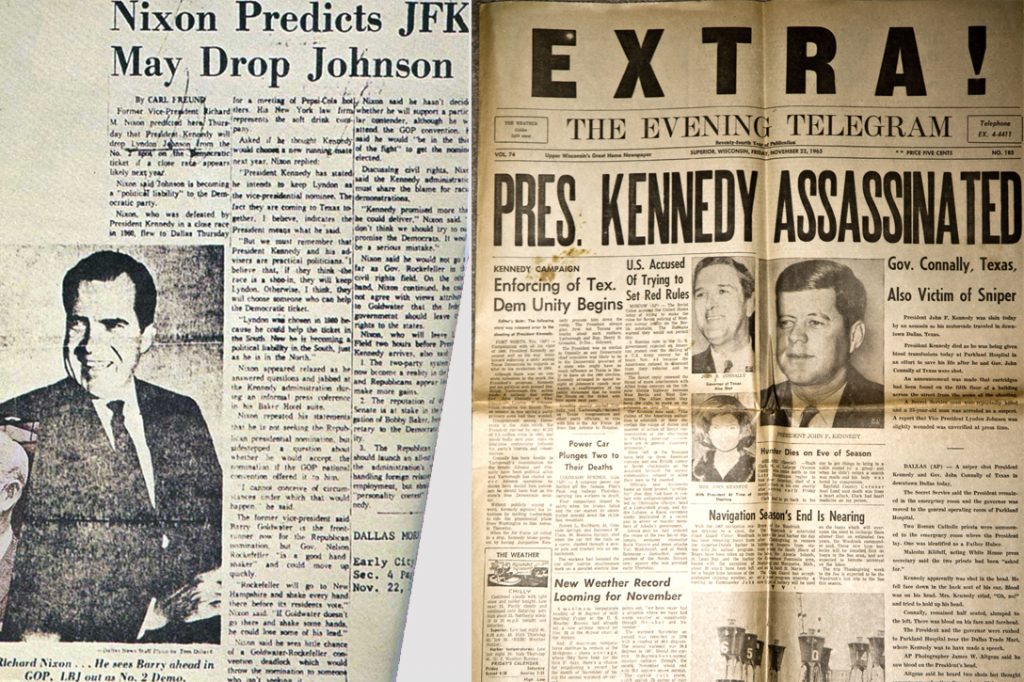
Nixon had finished his business and left the city by 9:05 on the morning of the twenty-second, several hours before Kennedy was shot. He learned of the event on his arrival back in New York City. Like most people, he no doubt was shocked and perhaps a bit alarmed. Many people, Nixon included, believed that Kennedy had stolen the presidential election in 1960 by fixing vote counts in Texas and Illinois.
At the very least, the appearance of Nixon’s November 21 press conference remarks in the newspaper just hours before Kennedy’s death was a stark reminder of the large and diverse group of enemies, in and out of politics, that JFK had accumulated.
Certainly, Nixon himself was sensitive to the notion that his appearance in Dallas had somehow contributed to Kennedy’s bloody fate. According to one account, Nixon learned of the assassination while in a taxi cab en route from the airport. He claimed at the time and in his memoirs that he was calm, but his adviser Stephen Hess remembered it differently. Hess was the first person in Nixon’s circle to see him that day in New York, and he recalled that “his reaction appeared to me to be, ‘There but for the Grace of God go I.’ He was very shaken.”
As Hess later told political reporter Jules Witcover:
“He had the morning paper, which he made a great effort to show me, reporting he had held a press conference in Dallas and made a statement that you can disagree with a person without being discourteous to him or interfering with him. He tried to make the point that he had tried to prevent it… It was his way of saying, ‘Look, I didn’t fuel this thing.’ ”
Nixon’s presence in Dallas on November 22, 1963, along with LBJ’s — and Poppy Bush’s quieter presence on the periphery — created a rather remarkable situation. Three future presidents of the United States were all present in a single American city on the day when their predecessor was assassinated there. Within days, a fourth — Gerald Ford — would be asked by LBJ to join the Warren Commission investigating the event.
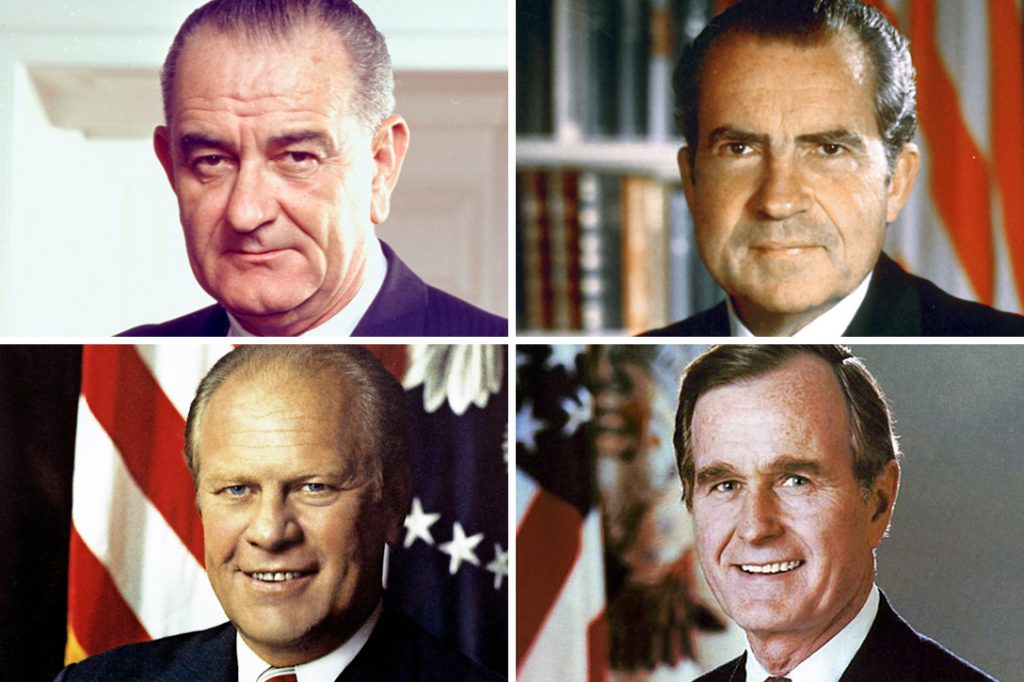
Bottled Up
.
Nixon’s unfortunate timing resulted from a series of events that seem, in retrospect, almost to have benefited from a guiding hand.
In mid-1963, friends had persuaded him that his long-term prospects required a move from California, where he had lost the 1962 race for the governorship. Now that he was a two-time loser, Nixon’s best hope, they counseled, was to find a position in New York that would pay him handsomely, and let him politick and keep himself in the public eye. His friend Donald Kendall, the longtime head of Pepsi’s international operations, offered to make him chairman of the international division. But the consensus was that a law firm job would suit him better, so he joined the firm of Mudge, Stern, Baldwin, and Todd. Kendall sweetened the deal by throwing the law firm Pepsi’s lucrative legal business. In September, Kendall himself was promoted to head the entire Pepsi company.
On November 1, President Ngo Dinh Diem of South Vietnam, a corrupt anti-Communist, was overthrown and assassinated. On November 7, Nixon wrote to GOP strategist Robert Humphreys, expressing outrage over Diem’s death and blaming the Kennedy administration.
“Our heavy-handed complicity in his murder can only have the effect of striking terror in the hearts of leaders of other nations who presumably are our friends.”
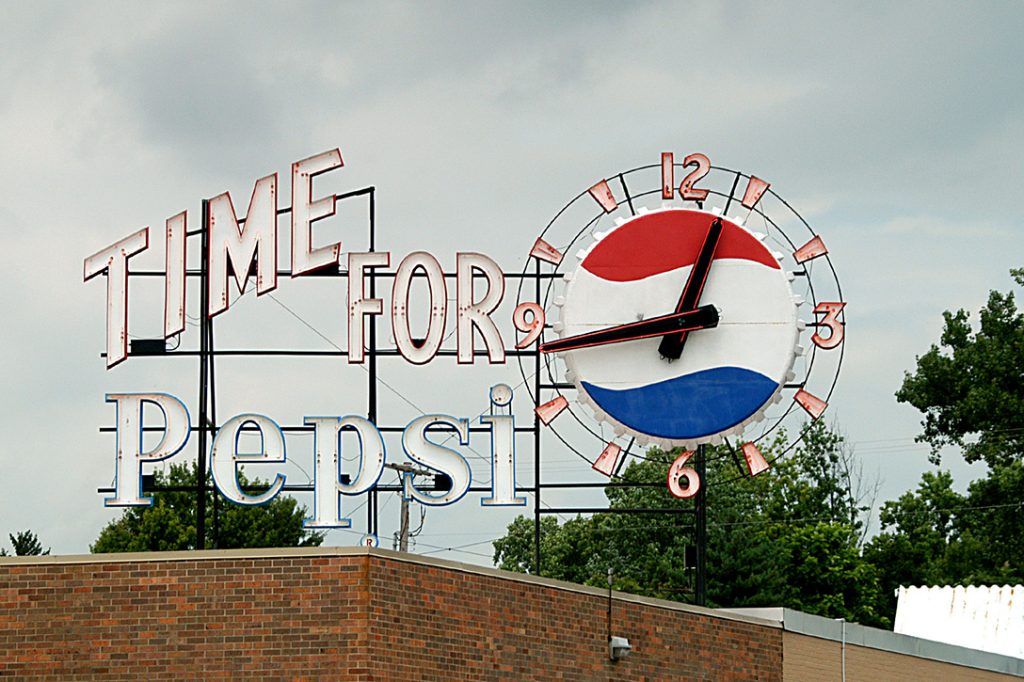
Photo credit: Joanna Poe / Flickr (CC BY-SA 2.0)
Historians disagree on what exactly Kennedy knew about Diem’s death, though Kennedy registered shock at the news — just as he had when Patrice Lumumba, the Congolese independence leader, was assassinated in 1961. Kennedy realized that he could be blamed. Later on, it would be established by the Senate Intelligence Committee that the CIA had been attempting to kill Lumumba. Also of interest is a little-noticed comment made by President Lyndon Johnson in 1966, caught by his own recording equipment, in which he declared about Diem:
“We killed him. We all got together and got a god-damn bunch of thugs and assassinated him.”
It is not clear whom he meant by “we.”
Kendall asked Nixon to accompany him to Dallas for the Pepsi corporate gathering coinciding with the bottlers’ convention in late November. The convention was an important annual event for Pepsi, and so would have been on Kendall’s schedule for a while, though the necessity of Nixon’s presence is less apparent. And with LBJ as keynote speaker, and appearances by Miss USA, Yogi Berra, and Joan Crawford, Nixon, the two-time loser, did not even appear at the convention.
For his part, Nixon seems to have agreed to go because it was an opportunity to share the limelight surrounding Kennedy’s visit. And since Nixon was traveling as a representative of Pepsi, and flying on its corporate plane — something noted in the news coverage — Kendall was getting double duty out of Nixon’s play for media attention. That was something Kendall understood well.
Donald Kendall was, like Nixon and Poppy Bush, a World War II Navy vet who had served in the Pacific. But instead of politics, he had gone into the business world, joining the Pepsi-Cola company and rising quickly through the ranks. Like Nixon and Bush, he was enormously ambitious. And in his oversight of Pepsi operations abroad, he also shared something else with them: a deep concern about Communist encroachment — which was just about everywhere. Plus Kendall had a passion for covert operations.
Kendall’s particular reason for being interested in Cuba was sugar, for many years a key ingredient of Pepsi-Cola. Cuba was the world’s leading supplier; and Castro’s expropriations, and the resulting U.S. embargo, had caused chaos in the soft drink industry. (It also had affected the fortunes of Wall Street firms such as Brown Brothers Harriman, which, as noted in chapter 3, had extensive sugar holdings on the island.)
Indeed, articles from the Dallas papers anticipating the bottlers’ convention talked openly about all these problems with Cuba. One of the articles, titled “Little Relief Seen for Sugar Problem,” explains the pressure felt by soft drink bottlers in light of a crisis concerning high sugar prices. The president of a major New York-based sugar company is quoted explaining why the crisis had not yet been averted: “The government probably thought the Castro regime might be eliminated.”
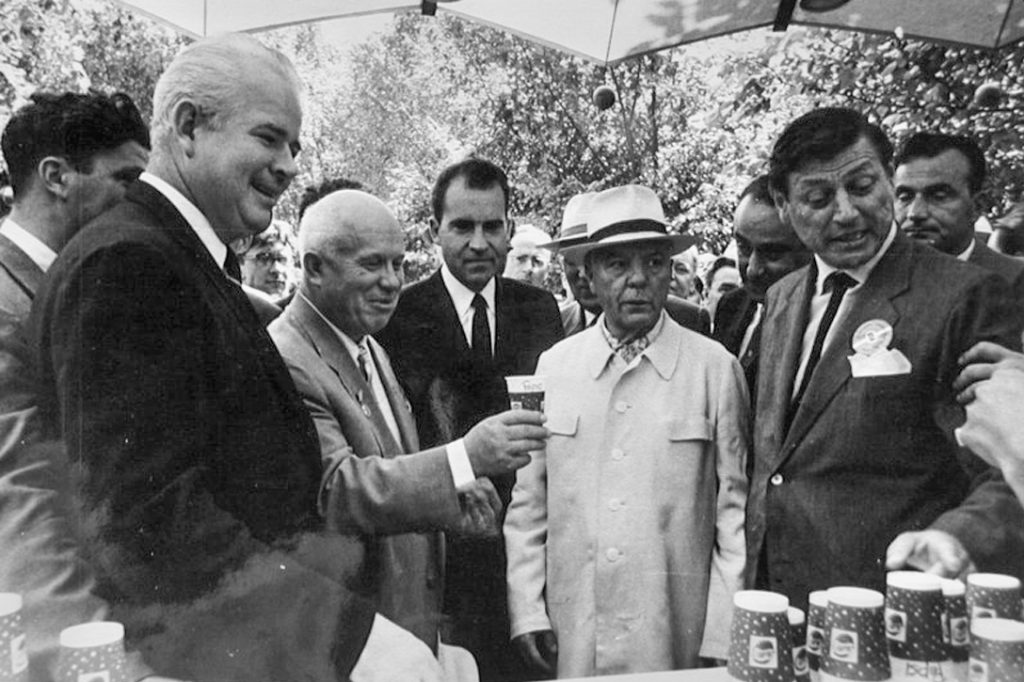
It is in this context that we consider a June 1963 letter from Nixon to Kendall, then still running Pepsi’s foreign operations. A researcher working for me found it in Nixon’s presidential library archives; it appears to be previously unpublished.
Dear Don:
In view of our discussion yesterday morning with regard to Cuba, I thought you might like to see a copy of the speech I made before the American Society of Newspaper Editors in which I directed remarks toward this problem. When I return from Europe I am looking forward to having a chance to get a further fill-in with regard to your experiences on the Bay of Pigs incident.
Dick
The letter rings a little odd. Nixon and Kendall were close, and more than two years had passed since the Bay of Pigs; it was unlikely that this would be the first chance Nixon got to discuss the subject with his friend. Furthermore, Kendall is not known to have had any “experiences” in relation to the invasion.
In a 2008 interview, Kendall, by then 87 years old but still maintaining an office at Pepsi and seeming vigorous, said that he could not recall the letter nor provide an explanation for it.
Given this, the use of the phrase in the letter appears to be some form of euphemism between friends, a sort of discreet wink. Nixon, the former coordinator of covert operations under Ike, clearly knew that Kendall was more than a soda pop man. Nixon’s experiences representing Pepsi instilled in him a lasting — and not altogether favorable — impression of what he acidly termed “the sugar lobby.” Haldeman got the message that treading carefully was wise. Some of his notes are intriguing in this respect. He urges special counsel Charles Colson:
0900 Cols[on] — re idea of getting pol. Commitments — Sugar people are richest & most ruthless before we commit — shld put screws on & get quid pro quo ie Fl[anigan] — always go to Sugar lobby or oil etc. before we give them anything
The CIA also knew the soft drink industry well. The agency used bottling plants, including those run by Pepsi, Coca-Cola, and other companies, for both cover and intelligence. Moreover, the local bottling franchises tended to be given to crucial figures in each country, with ties to the military and the ruling elites. It was not just bottlers that played such a role; there were marketing monopolies for all kinds of products, from cars to sewing machines, given out on recommendations of the CIA.
Kendall was a close friend of the Bush family and a fellow resident of Greenwich, Connecticut. In 1988, he would serve in the crucial position of finance chairman for Poppy Bush’s successful run for the presidency. His support for the Bushes included donating to George W. Bush’s 1978 Midland congressional campaign.
And as noted by The New York Times, Kendall was identified with the successful effort to overthrow the elected democratic socialist president of Chile, Salvador Allende.
As the Times would report in July 1976:
One of Mr. Kendall’s great passions is international trade, and his interest in foreign affairs won him a footnote in a 1975 interim report of a Senate Select Committee. The report was called “Alleged Assassination Plots Involving Foreign Leaders,” and discussed in part the assassination of Salvador Allende Gossens, the Marxist Chilean president who was killed in 1973.
The report stated that Mr. Kendall had requested in 1970 that Augustin Edwards, who was publisher of the Chilean newspaper El Mercurio, as well as a Pepsi bottler in Chile, meet with high Nixon Administration officials to report on the political situation in Chile. (Pepsi bottling operations were later expropriated by the regime.) That meeting, which included Mr. Kendall, Mr. Edwards, Henry Kissinger and John N. Mitchell, was indeed held, and later the same day, Mr. Nixon met with Dr. Kissinger and Richard Helms, Director of the Central Intelligence Agency. Mr. Helms later testified that President Nixon had ordered at the follow-up meeting that Chile was to be saved from Allende “and he didn’t care much how.” Mr. Kendall says he sees nothing sinister, or for that matter even controversial, in his action.
Like many on the right, quite a few bottlers regarded the Kennedy administration’s policy toward Castro’s Cuba as dangerously soft. Declassified FBI files show that, after Kennedy’s death, one man contacted the FBI regarding threatening remarks that his brother, a bottler, had made in reference to the president.
Another convention attendee was identified in FBI reports as having had a drink with Jack Ruby, the assassin of Lee Harvey Oswald, on the night of November 21.
Though unhappy with Kennedy, these independent businessmen clearly wanted to hear what Johnson had to say, which is why the Texas-born vice president was the convention’s keynote speaker.
By some estimates, the convention included close to 8,000 bottlers — so many, in fact, that it had taken over Dallas’s largest venue, the new Market Hall. This meant that when Kennedy’s trip planners determined where he would speak on November 22, one of the very few sufficiently large and central venues had long since been taken. The Dallas Trade Mart thereby became the most likely location for Kennedy’s speech, with the route through downtown to the Trade Mart, past the Texas School Book Depository, as the most likely for the presidential motorcade.
In fact, the Trade Mart was secured by that most unlikely group of “friends” of JFK, the Dallas Citizens Council, whose members’ views were described by The New York Times as “very conservative and range rightward.” The council had co-sponsored the luncheon as a putative peace offering to JFK. Indeed, it seems that JFK’s itinerary in Dallas was circumscribed by the bottlers and the Citizens Council.
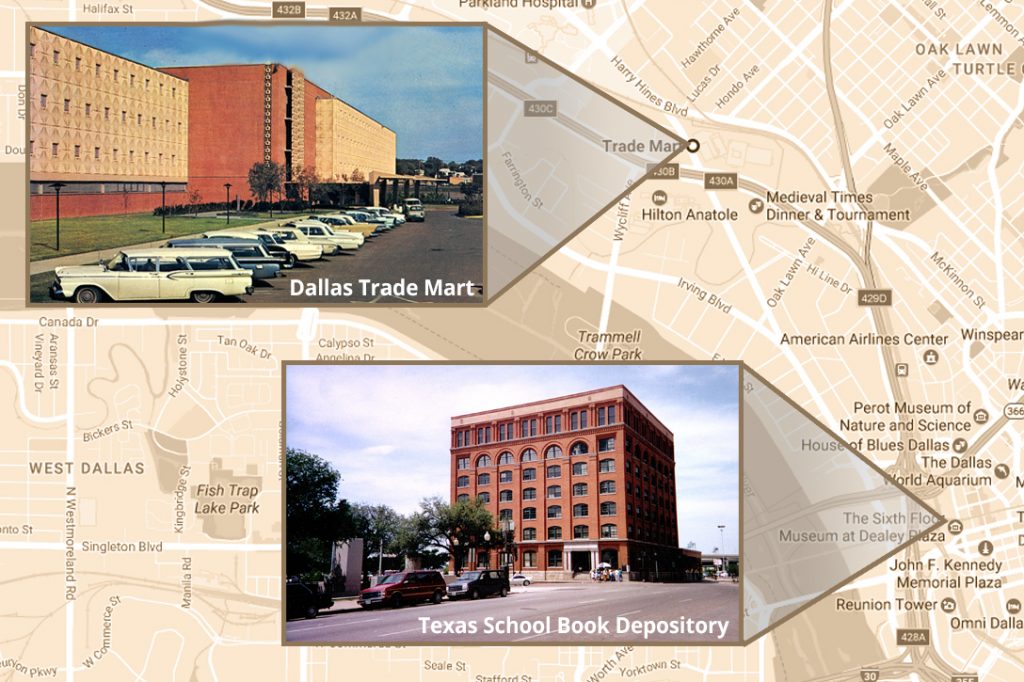
The mere fact that 8,000 strangers had poured into Dallas in the days before JFK’s arrival should presumably have been of interest, yet the Warren Commission ignored the event altogether.
Another interesting thing about the bottlers’ convention is that the Army Reserves volunteered to help facilitate an unusual extracurricular activity. As noted in chapters 6 and 7, Poppy Bush’s friend Jack Crichton was head of a local Army Intelligence unit. Associates of Crichton’s who were involved
with the Army Reserves had managed to get into the pilot car of Kennedy’s procession, with one as the driver. Crichton would also provide the interpreter for Marina Oswald after her husband’s arrest as the prime suspect in Kennedy’s murder.
According to a short item in the Dallas Morning News the day before Kennedy was shot, members of the Dallas unit of the 90th Artillery Division of the Army Reserve would be providing trucks and drivers to transport 200 orphans to a livestock arena for a rodeo sponsored by the bottlers’ group. This was to take place at nine P.M. on the night before Kennedy’s arrival.
The arena was at Fair Park, near the site under which Crichton’s Dallas Civil Defense maintained its underground emergency bunker and communications facility. Putting aside the Dickensian aspect of moving orphans in Army trucks within an affluent American city, this raises some questions about the reason for this odd maneuver. Whatever the true purpose of a small platoon of Army vehicles being permitted to move about Dallas on purportedly unrelated civilian business as the president’s arrival was imminent, it appears investigators never considered this incident worthy of a closer look.
Cumulatively, the bottlers’ convention was responsible for a number of curious circumstances that may be said to have some relevance to the events surrounding Kennedy’s death:
• The convention brought Nixon to Dallas.
• It brought 8,000 strangers to Dallas.
• It sent army vehicles into action on city streets the night before the assassination.
• Its early reservation of one large venue helped determine Kennedy’s ultimate destination and thus the motorcade route.
In any event, as Nixon’s adviser Stephen Hess has recounted, the former vice president emerged deeply shaken about the timing of his Dallas visit. It served to remind him that if he ever occupied the Oval Office, he too could be vulnerable and targeted — by the very same players. And his presence in this incriminating spot was suggestive of wheels within wheels, to which he of all people would have been alert.
Were these intrigues what fueled President Nixon’s obsession with the CIA and its cloak-and-dagger activities in the Kennedy era? This little-noted tug-of-war, a struggle over both current policy and past history, would become an ongoing theme throughout Nixon’s term in office.
The Loyalist in Chief
.
At one time, Poppy Bush had worked hard to position himself as Richard Nixon’s most loyal servant. An example appeared in a 1971 profile of Poppy in his role as Nixon’s United Nations ambassador. Under the banner headline “Bush Working Overtime,” the Dallas Morning News of September 19,1971, portrayed the ambassador as poised at the center of world affairs.
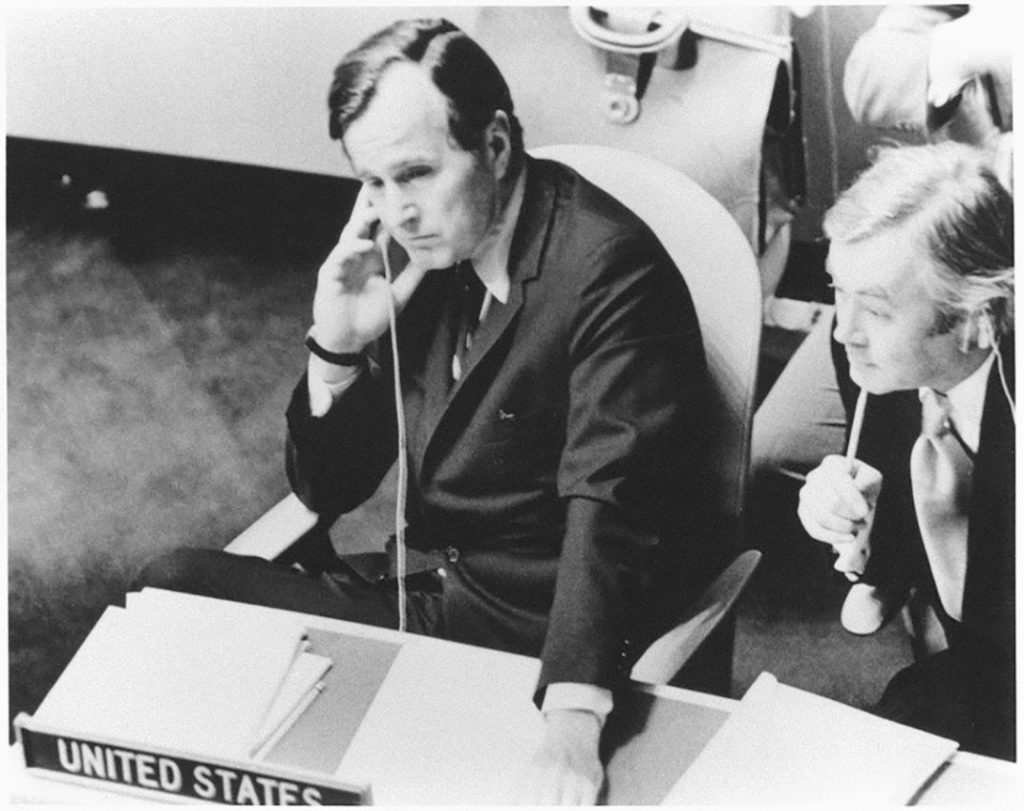
Leaning forward at his desk, a large globe next to him, his lean face bearing a look of calm intensity, George H. W. Bush looked almost presidential. The reporter for the Texas paper picked up on that. But he was equally struck by Poppy’s devotion to the sitting president. Ambassador Bush, he noted, “is loyal — some say to a fault — to President Nixon, and frequently quotes him in conversation.”
It was the image Poppy wanted to convey. Even when the reporter asked for his own views, he quickly deferred. “I like to think of myself as a pragmatist, but I have learned to defy being labeled,” Bush said. “What I can say is that I am a strong supporter of the President.”
Of course, when someone defies being labeled, it gives him extraordinary flexibility to move in different circles, to collect information, to spin on a dime — in short, to behave a lot like a covert intelligence officer.
The image of Poppy as the ultimate loyalist was one he would project for three more years — right up to the final days of the Nixon presidency. Not even Nixon, who was famously distrustful, seemed to doubt it. After winning the 1972 election in the midst of the Watergate scandal, Nixon decided to hedge his bets and clean house.
Planning to fire all but his most trusted aides, Nixon instructed Ehrlichman to “eliminate everyone except George Bush. Bush will do anything for our cause.” This trust endured to the end of Nixon’s presidency.
If indeed Bush was ever a Nixon loyalist, he certainly flipped the moment the tide turned. This new stance emerged with the 1974 public release of the transcript of Nixon’s smoking gun conversation with Haldeman. As Bush would record in his diary after Nixon’s final cabinet meeting, the taped conversation was irrefutable proof that “Nixon lied about his knowledge of the cover-up of the Watergate scandal… I felt betrayed by his lie… I want to make damn clear the lie is something we can’t support.”
Added Poppy: “This era of tawdry, shabby lack of morality has got to end.”
This purported diary entry was most likely part of Poppy’s perennial alibi trail. It could have been Bush family tradecraft, something like Barbara’s Tyler, Texas, hair salon letter from November 22, 1963 — always intended for public view. Perhaps the most revealing part is the point at which Bush summarizes the content of the smoking gun conversation.
Poppy selectively paraphrases a tiny part of that session, making it look as if Nixon had ordered Haldeman (as Bush put it) to “block the FBI’s investigation of the Watergate break-in.” This, Poppy asserted, “was proof [that] the President had been involved, at least in the cover-up.”
What Poppy omitted were two key things:
(1) That it was actually John Dean’s suggestion, not Nixon’s, to block the investigation.
(2) That the CIA was at the center of the intrigue to begin with.
Related front page panorama photo credit: Adapted by WhoWhatWhy from Watergate (Indutiomarus / Wikimedia), Richard Nixon (The White House / Nixon Library), John F. Kennedy (The White House / Wikimedia) and Texas flag (Makaristos / Wikimedia).
